 At a glance
At a glanceExpert's Rating
Pros
- Fantastic lubed switches
- Interior foam
- Wrist rest for $10 upgrade
Cons
- Fixed USB cable
- Software could be more straightforward
- Few media keys
Our Verdict
The K70 Core isn’t just a huge improvement over Corsair’s more basic keyboard designs. Thanks to lubed switches and internal foam, it has the best typing experience of any Corsair keyboard, at a competitive price.
Best Prices Today: Corsair K70 Core keyboard
Despite the new “Core” moniker, the K70 Core is not Corsair’s cheapest gaming keyboard. It is the cheapest of the K70 line…which is offered in a variety of sizes and features. So frankly, the branding is a bit of a joke. But here’s the punchline: The K70 Pro is easily my favorite K70 keyboard, and maybe my favorite Corsair board overall.
Why? It’s all about the switches. While some previous Corsair boards felt distinctly “pingy,” and more expensive ones go for magnetic switches with questionable utility, the K70 Core uses Corsair’s new self-branded MLX switches. These are smooth and “thocky” thanks to being pre-lubed from the factory. Combined with two layers of internal foam, the K70 Core just feels a lot better than any other Corsair keyboard, no matter its capabilities.
In fact, I’d say it’s a better-feeling board than any major “gaming” brand at the $100 level. Yeah, it’s that good.
Further reading: See our roundup of the best gaming keyboards to learn about competing models.
It’s all about the switches
Before we go any further I should point out that the actual price of the K70 Core is a little nebulous. Without the magnetic palm rest seen in these review photos, and with basic ABS keycaps, it’s $99.99. With the palm rest, it’s $109.99 — a worthy upgrade. And right now, Corsair is giving buyers a free set of PBT keycaps if they order directly from their online store, in a choice of black, white, blue, or green. That’s a $30 freebie — not bad at all.
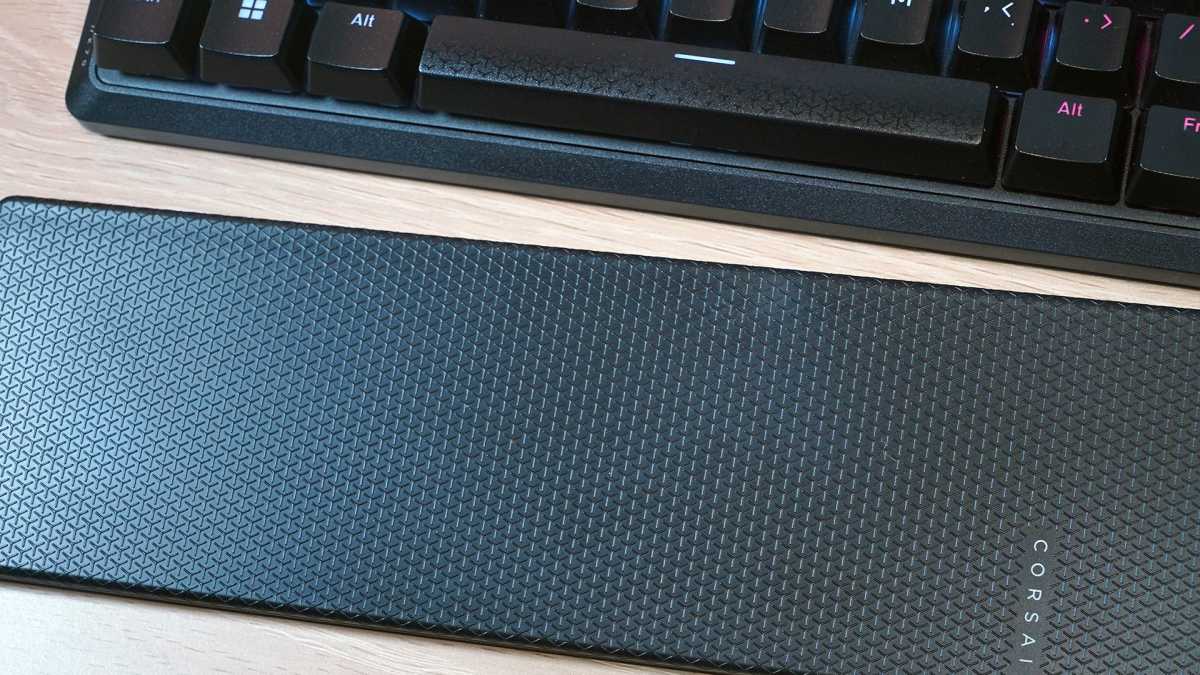
Michael Crider/Foundry
Even at $140 for all the parts included in this review, the K70 Core is still the cheapest in the K70 line by retail price. That’s despite being a full-sized layout, complete with a number pad and a rotary volume dial, which is vertical like a barrel as opposed to the horizontal log-like volume dial found on recent Corsair boards. The body is plastic with some rubbery accents, like the palm rest, but Corsair did spring for aluminum for the primary typing deck.
The keyboard features RGB lighting, programming in the iCue software, single-stage fold-out feet — pretty much the only corner cut is the USB cable, which is fixed in place. Compared to the company’s more advanced designs, it lacks both hot-swap sockets and magnetic switches. Stylistically it’s a little basic too, with just one media key plus the dial (which has a rakish trio of stripes on its knurled edge). Corsair’s glossy upper deck with an illuminated logo, a staple of its design for some years, is gone.
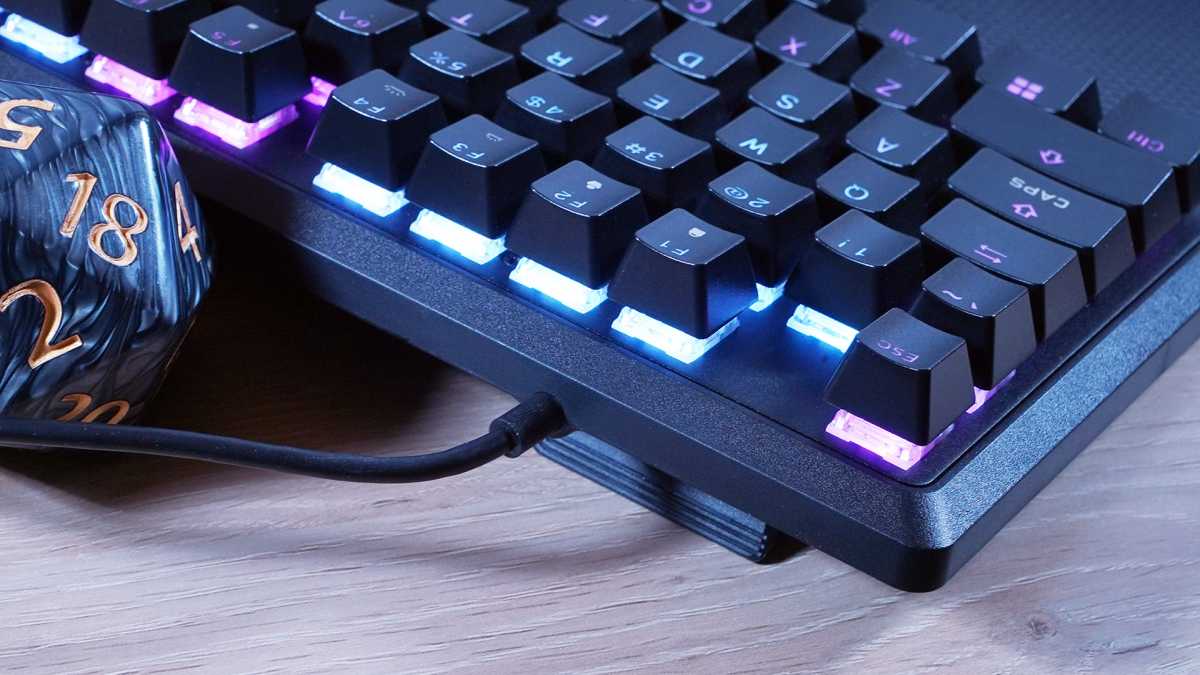
Michael Crider/Foundry
But you know what? That’s fine. The K70 Core isn’t trying to be anything more than what it is. And what it is is a shockingly good keyboard to type and game on.
Typing and gaming
It’s hard to put into words exactly why the K70 Core feels so much better than other gaming boards in general, and other Corsair boards in particular. The company’s new self-branded MLX Red linear switches are super-smooth, even with a relatively long travel from top to bottom. This comes from a liberal lube job (you, in the back, stop that snickering) straight from the factory. With a generous amount of interior foam, the sound is deep, flat, and satisfying, while still being far quieter than most gaming designs.
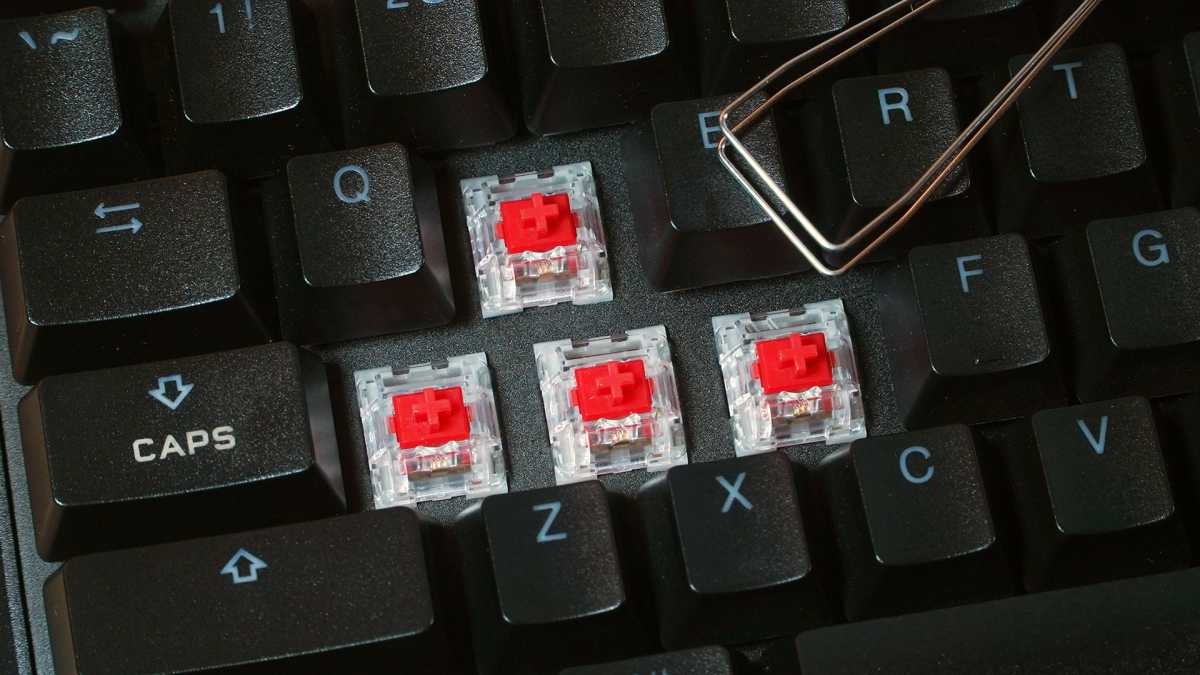
Michael Crider/Foundry
It’s the kind of custom-inspired improvement that Asus and Razer have made with their own branded switches on the ROG Azoth and the BlackWidow Ultimate V4 75%, respectively. I’d say the MLX switches feel similar to Razer’s latest in quality. But crucially, both of those keyboards are far more expensive than this one. And while they’re also far more capable (possibly too capable for the Asus design), here’s Corsair proving that you can get a great experience at a much more accessible price.
I’d almost recommend the K70 Core more to office typists than gamers, as the long travel of the keys and high profile of the PBT keycaps feel more geared towards those typing out thousands of words a day. (Hey, what’s up, my name’s Michael.) More expensive boards like the Corsair K70 Max are technically more flexible, but not in a way that most gamers will actually take advantage of.
But of course it’ll work fine for gaming too, with standard N-key rollover and a 1,000Hz polling rate that’s faster than most humans’ reflexes. I also dig the barrel-shaped dial, which is easy to reach and press for a mute button than the horizontal dials that are becoming more common.
The K70 Core isn’t trying to be anything more than what it is. And what it is is a shockingly good keyboard to type and game on.

Michael Crider/Foundry
Corsair’s iCue software is fine, better than some, not as good as others. It takes a little longer to find your feet than it should, but I like the separate menu dedicated to the dial specifically. If you’re in it for the RGB lighting, there are about a dozen built-in settings and customization options, plus the ability to tie into Corsair’s galaxy of other gadgets, lights, and bulbs. The board can handle three profiles saved to its internal memory.
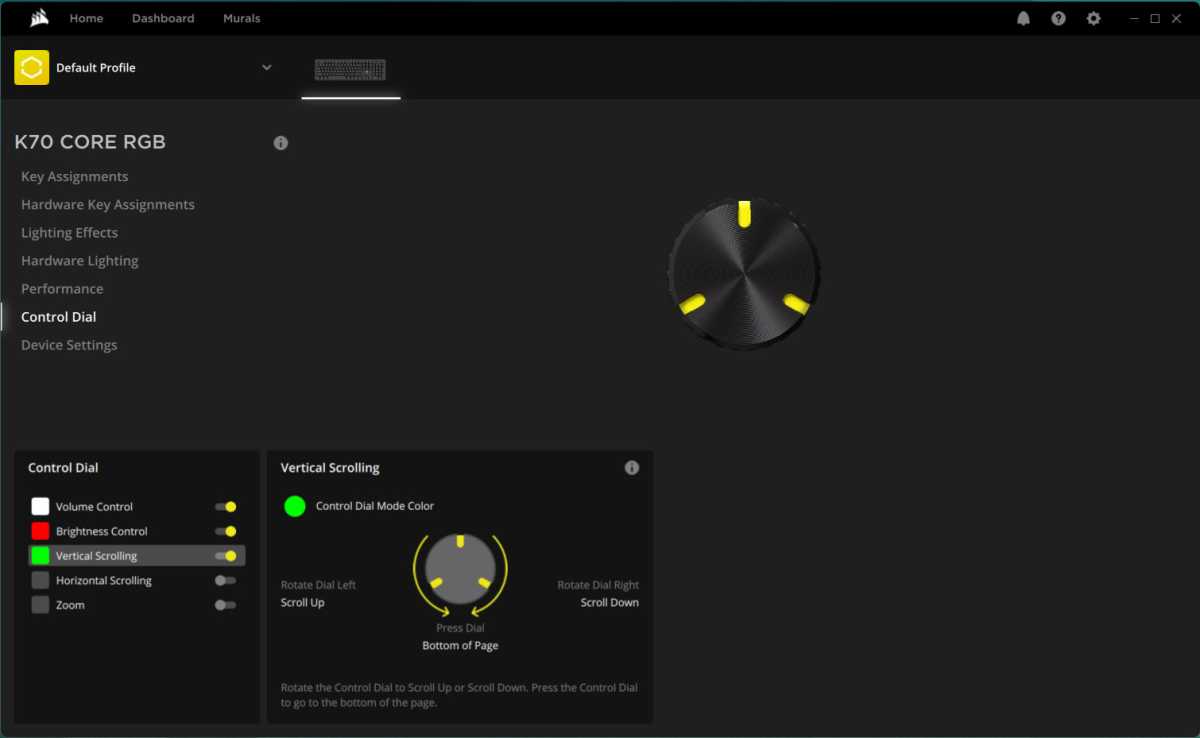
Michael Crider/Foundry
With an unlimited budget, I’d pair the K70 Core with some low-profile DSA keycaps to make it feel more gamer-focused. But don’t let that fool you: With fantastic typing, a comfy wrist rest (for a small splurge) and a free PBT upgrade, this board is shockingly good for just about any desk that can fit it.
Should you buy the Corsair K70 Core?
For my customary value judgment, I’ll assume that you’ve sprung for the $10 wrist rest upgrade, but haven’t been fast enough to get the freebie PBT keycaps. At $110 for a basic wired full-sized board with a fantastic typing experience, I’d recommend the K70 Core over any other Corsair design, unless you must have fancy adjustable switches or wireless.
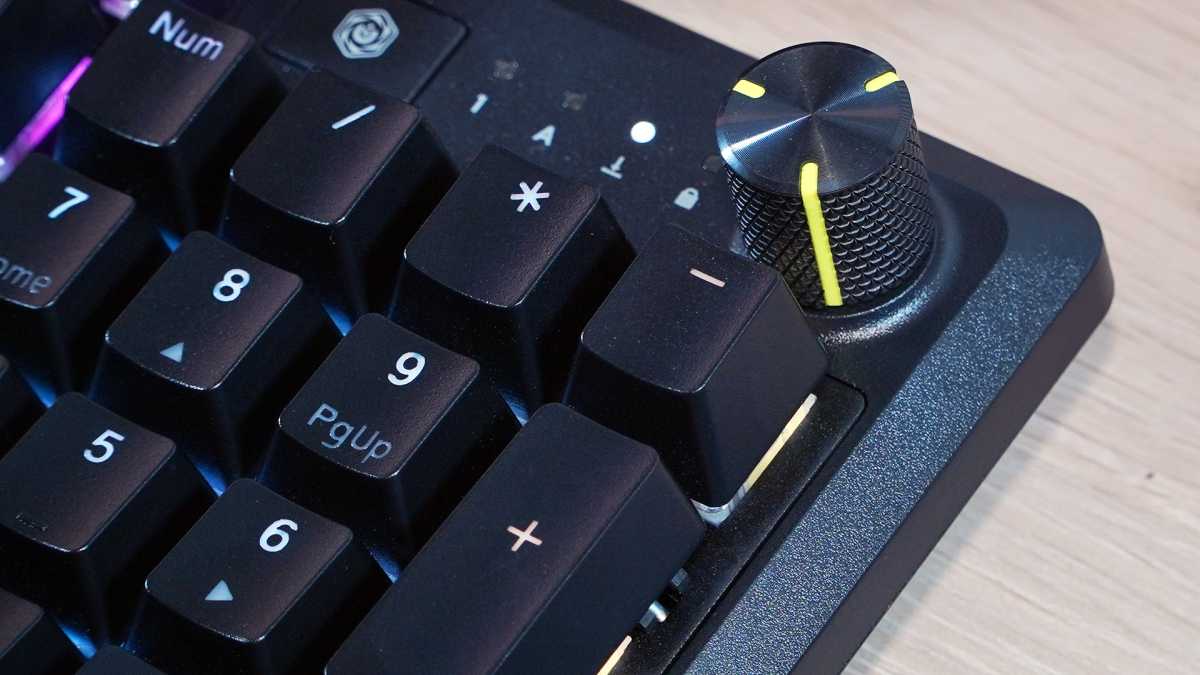
Michael Crider/Foundry
The K70 Pro competes with the Cooler Master CK352, the Razer Balckwidow V4 X, the SteelSeries Apex 5, and the Logitech G512. All but the SteelSeries lack a wrist rest, and that keyboard also includes an OLED display for $10 less. It’s a compelling offering…on paper. But never having seen any true utility from a tiny keyboard-mounted screen, and being unimpressed with the much more premium magnetic switches on the Apex series, I’m still giving the edge to Corsair.
That said, a $110 keyboard is only budget in relative terms. If you need a true penny-pincher choice in a full-sized gaming design, I’d suggest the Redragon K565. There’s also the Redragon K596, which adds wireless capabilities at a price still well below this board.

Michael Crider/Foundry
With a huge stride forward in typing experience thanks to custom switches and internal foam, the K70 Core represents a new direction for Corsair’s keyboard design. I hope that its more expensive and more complex boards take a lesson from this success, especially considering how it was achieved with a relatively modest price tag.




